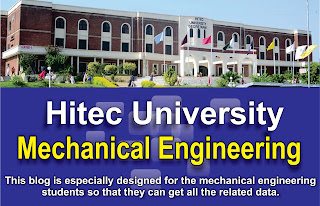Showing posts with label Bourdon Tube. Show all posts
Fluid Mechanics Lab
By : Asad Ali Arshad |
| Bourden Tube Experiment |
1. Dead Weight Calibrator.pptx
null
To Calibrate a Bourdon Type Pressure Gauge Using a Dead Weight Pressure Gauge Calibrator
Theoretical Background
1. Calibration: To check error with comparison to some standard device is called calibration.
2. Absolute Pressure (Pabs): The pressure that is taken with reference to absolute zero is called absolute pressure, and at absolute zero there is a perfect vacuum.
3. Gauge Pressure (Pg): The pressure that is taken with reference to atmospheric pressure is called gauge pressure. It may be positive or negative depending upon whether we take (Pg) above the atmospheric pressure or below the atmospheric pressure. Gauge pressure is always measured with atmospheric pressure, that is why when gauge pressure is at atmospheric pressure it results zero.
Pabs = Patm + Pgau
Bourdon Tube Pressure Gauge:
uThe bourdon tube pressure gauge is the most common type used to measure fluid pressure because it is reliable, inexpensive and relatively simple.
uThe bourdon tube is a curved tube closed at one end, which is attached to a spring-loaded mechanism that is itself attached to the gauge’s needle.
uThe port of the gauge is attached to the location in the system where you’re measuring pressure.
As pressure increases within the bourdon tube, the metal tube starts to straighten, and as it does, it tugs on the lever attached to the needle.
Apparatus: Dead Weight Tester
Procedure:
1. Remove the piston from unit.2. Close valve V1 and open valve V2.
3. Fill cylinder with oil.
4. Now close valve V2.
5. Put piston back in position with V1 and V2 in close position.
6. Read out pressure value on gauge and compare it with theoretical results.
7. Repeat the experiment by adding weights.
Hitec Mechanical Engineering
Mechanical Engineeirng Hitec Mechanical Engineering As we know Mechanical Engineering is the branch of engineering dealing with the des...









